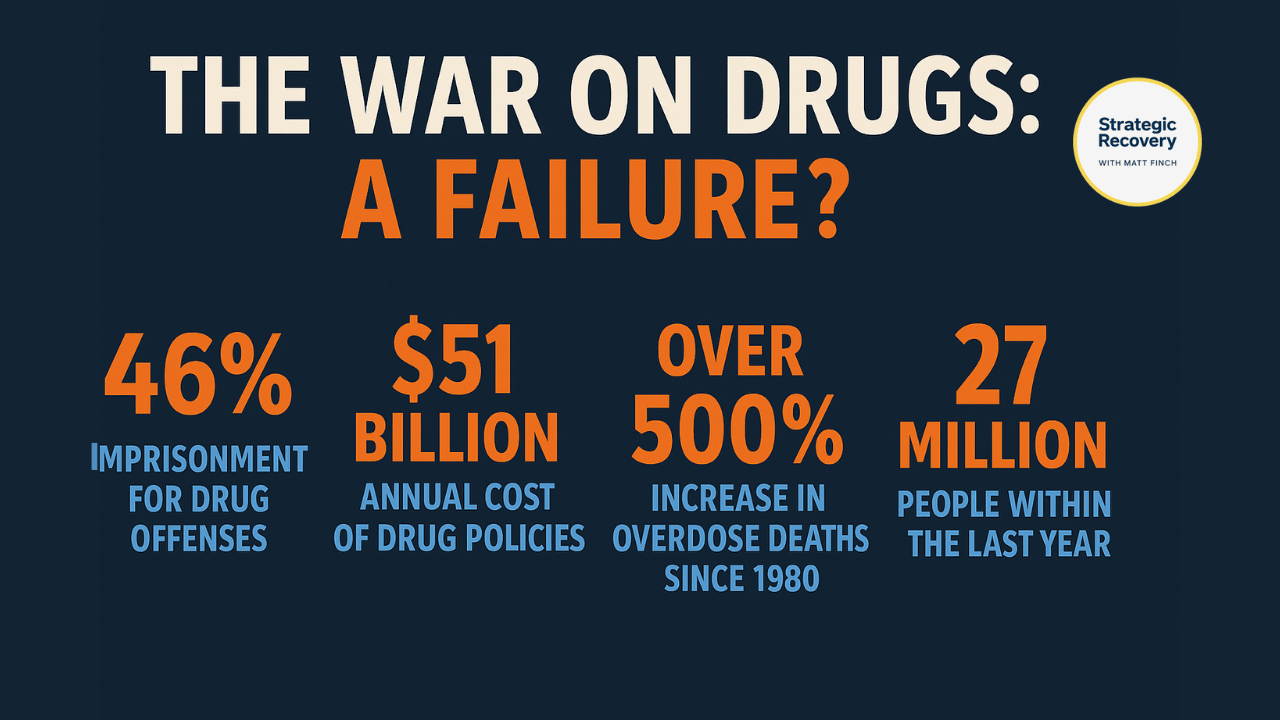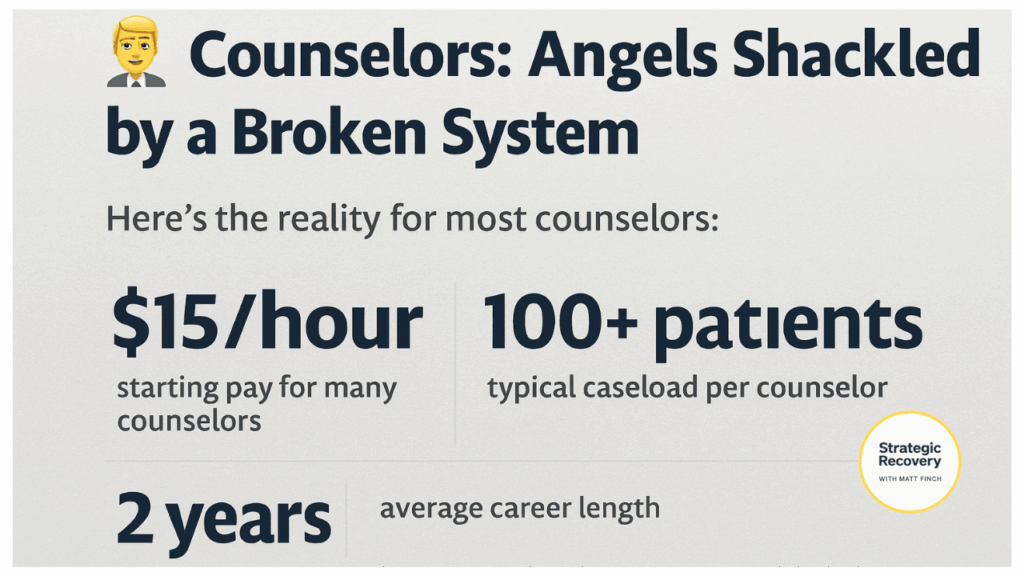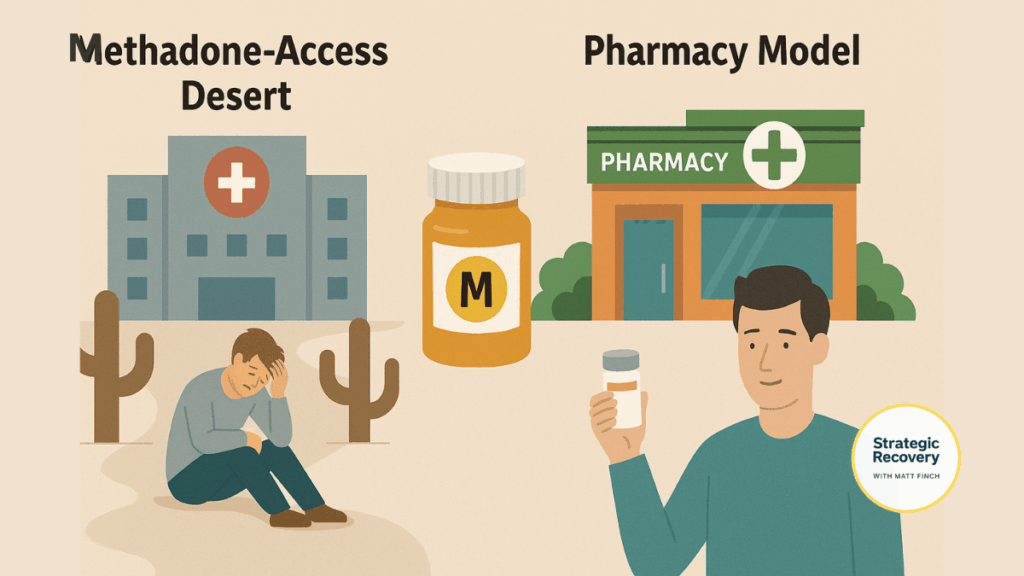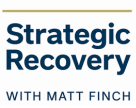Addiction in America is not just a medical crisis. It is a moral crisis.
It reveals who we really are as a nation: how we treat the wounded, the vulnerable, and the suffering. And right now, the answer is clear: we are failing them.
Every overdose death is a tombstone inscribed not only with a name, but with a question: Why didn’t we do better?
We were told the War on Drugs ⚔️ would make us safer.
It didn’t. 💔
We were told treatment centers 🏥 would heal us.
Most don’t. 😔
We were told doctors 🩺 knew the way forward.
Too many don’t. 🚫
Instead, we have a system that chews people up, spits them out, and calls it “treatment.”
But look around: over 100,000 Americans die from overdoses every year.
This isn’t just failure. It’s betrayal. And it’s a betrayal that touches every family, every community, and every soul in this country.
📊 State of the Crisis: Fast Facts
Before we go any further, let’s stop and look at the scale of what we’re really facing. Numbers can never capture the human grief of addiction, but they do shine a spotlight on how massive — and how preventable — this catastrophe is.
The Dark Stats — Why U.S. Addiction Care Must Evolve
-
💀
100,000+ overdose deaths every year in the U.S.More lives lost annually than the Vietnam War claimed in over a decade. Each week is the equivalent of a plane crash full of people.
-
💊
Only 1 in 4 people with opioid use disorder receive proven medications.According to the National Survey on Drug Use and Health (NSDUH), three-quarters who could benefit from buprenorphine or methadone never get them. Imagine treating cancer with 75% of patients turned away.
-
🧩
Traditional rehab & abstinence-only approaches show 3–10% long-term success rates.Despite a $50B industry built around 12-step rehab, most people relapse—then get blamed for “failing the program.” See Harvard psychiatrist Lance Dodes’ review in The Carlat Report.
-
🔥
Counselors burn out within ~2 years on average.Crushing caseloads, low pay, and constant paperwork push out the very people meant to help—leaving patients adrift. Source: National Library of Medicine.
Each of these statistics is more than a number. Each is a face, a family, a story that deserved better.
The message is clear: America is still in the Dark Ages of Addiction Treatment. We know what works. We simply don’t deliver it.

⚔️ The War on Drugs: Half a Century of Collateral Damage
The War on Drugs is now over 50 years old. Half a century of promises, propaganda, and punishment.
And what has it given us?
The Costs & Consequences of the “War on Drugs”
-
💸
\$51 billion per yearspent on enforcement ( Global Commission on Drug Policy ).
-
🏚️
Prisons overflowingwith nonviolent drug offenders.
-
🧩
Communities devastatedespecially Black and Hispanic communities targeted disproportionately.
-
🧪
Drug markets evolved faster than policyfueling today’s fentanyl/xylazine crisis.
As Dr. Gabor Maté reminds us:
“Addiction is not a choice anyone makes; it is an attempt to solve a problem of human pain.”
But instead of solving pain, America criminalized it. Instead of healing, we punished. Instead of connection, we chose cages.
And the result? A war that has not only failed, but has become its own addiction — an endless cycle of fear, punishment, and profit (Global Commission on Drug Policy).

🏥 The Treatment Industry: A $50 Billion Revolving Door
Walk into most mainstream rehabs and you’ll find the same formula:
- 12-step meetings
- Abstinence-only prescriptions
- Group therapy
- Discharge after 28 days
That’s it. That’s the model.
And what’s the result? A 90% relapse rate.
It’s not just ineffective. It’s cruel.
As I’ve often said — and been attacked for saying —
“There are many paths to recovery, not just AA.”
The fact that such a simple truth sparks rage tells you everything about how rigid and defensive this industry has become.
💊 Medicine & Doctors: Four Hours of Training for a Lifetime of Suffering
Did you know that most U.S. doctors get less than 4 hours of training in addiction during medical school? Four hours. That’s it (Partnership to End Addiction).
🔥 Imagine training a firefighter for four hours and then sending them into an inferno.
That’s what we’re doing with physicians and addiction. 💊
The results are predictable:
- 😔 People in withdrawal turned away or shamed in ERs.
- 💊 Medications like buprenorphine, methadone, and naltrexone under-prescribed.
- 🧠 Patients told “you’ll be an addict forever” instead of “you can heal.” ✨
Even worse? Pharmacy deserts. In many towns, even if you get a buprenorphine prescription, the pharmacy won’t fill it — out of stigma, fear, or bias.
This isn’t healthcare. It’s malpractice on a national scale.
🧑💼 Counselors: Angels Shackled by a Broken System
I’ve been there. I worked as a chemical dependency counselor. I loved my patients. But the system broke me — just like it breaks almost everyone in it.
Here’s the reality for most counselors:
-
💸
Low pay (as little as $15/hour).
-
📋
Overload (caseloads of 100+ patients).
-
🔥
Burnout (average counselor lasts 2 years).
That’s not care. That’s projection. And it leaves patients unseen, unheard, and underserved.

💉 Big Pharma & the FDA: Profit as Policy
The opioid epidemic wasn’t a natural disaster. It was a man-made plague.
Pharmaceutical giants lied about “non-addictive” opioids, flooded communities with pills, and then cashed out while people died. The FDA — the agency meant to protect us — looked the other way.
And when natural alternatives like kratom or amino-acid therapy gain traction? Suddenly the FDA wages war on them. Why? Because they threaten the bottom line of Big Pharma.
It’s a simple formula:
-
💊
FDA-approved drugs (that kill hundreds of thousands annually) = legal.
-
🌿
Natural alternatives (that rarely kill anyone) = attacked, smeared, banned.
This isn’t science. It’s sales.
🚨 The Hidden Failures Nobody Talks About
The failures go deeper still:
- Racial inequities: Black and Hispanic patients are far less likely to receive life-saving buprenorphine (JAMA Network).
- Incarceration gaps: Jails and prisons routinely deny MOUD — even though offering it slashes overdose deaths after release (NIH).
- Housing neglect: Try finding recovery while living in a car. Stable housing is treatment — yet barely integrated into the system.
- Stimulant disorders ignored: Meth and cocaine deaths are surging, but no FDA-approved medications exist. Only contingency management works, and it’s still underused (NIH).
- Workforce shortages: Counselors, nurses, and prescribers are burned out and fleeing. The pipeline is shrinking.
- Data lags: Overdose stats arrive months late, meaning we’re always reacting after the fact.
- Methadone deserts: In most of the U.S., methadone is locked in special clinics, forcing daily commutes that crush lives.

🌱 The Path Forward: The Strategic Recovery Paradigm
Here’s the truth: we don’t need to reinvent the wheel. We already know what works. We just don’t use it.
The future of recovery must be bio-psycho-social-environmental-spiritual. That means healing the brain, body, mind, and spirit together.
- Biochemical repair: Amino acids, vitamins, minerals, adaptogens, herbs, and nutritional psychiatry (Academy for Addiction and Mental Health Nutrition).
- Psychological tools: CBT, EMDR, somatic therapy, inner child healing.
- Social recovery: Building recovery capital, family support, peer communities.
- Environmental design: Optimizing physical + digital + energetic environments for recovery.
- Spiritual connection: Meditation, prayer, mindfulness, meaning-making.
- Holistic therapies: qigong, yoga, tai chi, acupuncture, neurofeedback, hypnosis, laughter therapy.
- Harm reduction: Naloxone everywhere. Syringe services. Drug-checking strips. Education without shame.
- Housing First: Stable homes as the foundation of healing.
- Policy reform: Portugal’s model proves decriminalization + treatment saves lives (Cato Institute report).
💡 As Julia Ross (author of The Mood Cure ) has shown, when you fix brain chemistry 🧠, cravings plummet. ⬇️
🧬 As Dr. Charles Gant ( End Your Addiction Now ) taught, addiction is often a nutrient deficiency in disguise. 🍎
🌿 And as the Alliance for Addiction Solutions reminds us, the future is already here — it just hasn’t gone mainstream yet. ✨
🔥 The 10 Shifts That Would Save Lives Tomorrow
🌍 10 Steps to Transform Addiction Recovery
- Decriminalize addiction — treat it as health, not crime. ⚖️
- Universal access to MOUD (buprenorphine, methadone, naltrexone). 💊
- Fund housing as treatment — no one heals on the streets. 🏠
- Legalize and fund harm reduction (syringe services, naloxone, drug checking). 💉
- Integrate nutrition & supplements into every treatment plan. 🥦
- Reform medical education — require robust addiction training. 🎓
- Pay and train counselors fairly — stop bleeding the workforce dry. 💼
- End pharmacy discrimination — enforce stocking of buprenorphine. 🚫💊
- Measure and publish treatment outcomes — no more black box rehabs. 📊
- Expand pathways — embrace AA and SMART and holistic therapies. 🌿
🌟 My Message of Sacred Anger & Hope
I write this not only with anger — but with sacred anger. The kind of anger that says: this cannot go on.
Because addiction is not a moral failing. It is a human condition born of pain, trauma, and disconnection. And people can heal. I’ve seen it. I’ve lived it.
As Jesus said:
“Whatever you did for one of the least of these brothers and sisters of mine, you did for me.”
As the Buddha said:
“Our sorrows and wounds are healed only when we touch them with compassion.”
🌿 We need a revolution in how we see addiction —
not as ❌ sin, not as ⚖️ crime, not as 😔 weakness,
but as a 🌅 call for healing and wholeness. 💫
The Dark Ages of Addiction Treatment must end. The Renaissance of Recovery must begin.
And we — you, me, all of us — are the ones who must usher it in. ✨
👉 If this resonates, share it. Someone in your circle may need it more than you know. 💛
🌻 Healing is not rebellion — it’s evolution.
Your Questions, Answered with Clarity & Compassion
Evidence-based guidance for families, clinicians, and anyone seeking a path out of the dark.
Why do experts say the War on Drugs failed?
What actually works for opioid use disorder?
Is AA bad?
What is “biochemical repair” in recovery?
Why is housing considered part of treatment?
What is contingency management?
What’s the single biggest change we could make tomorrow?
🌌 Join the Recovery Renaissance
Be part of the movement redefining recovery through
wisdom, science, and compassion.
Every step you take toward balance helps light the way for others. 🌠




Leave a Reply